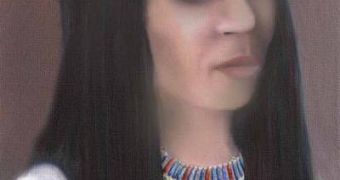Using state-of-the-art forensics science, a police sketch artist who works with the Maryland Department of Justice and the State Police Missing Persons Unit has reconstructed the face of the University of Chicago-owned mummy of the ancient Thebes temple singer Meresamun. A second reconstruction has been done by Chicago artist Joshua Harker, who has used a software that reconstructs dead people's faces with such accuracy, that the images thus obtained are admissible in courts of law as positive victim identifications. The two artists, who have worked independently from each other, have arrived at similar faces.
Michael Brassell, who regularly works with the police on cold cases, where a lot of time has passed since the murders, and leads are few, has used CT scan to assess Meresamun's facial proportions, and has drawn a sketch of the 30-year-old lady, who died at around 800 BC of yet-unidentified causes. Experts at the University of Chicago, where the mummy is kept, have thus far had no idea of what the person behind the mask looked like, but they now can display her face next to her sarcophagus.
On the other hand, Joshua Harker has employed multiple, detailed CT scans of the mummy's skull for his rendering of her face. He has used the Gatliff-Snow American Tissue Depth Marker Method for his work, and says that a skilled technician can easily use the software for facial reconstruction, regardless of the age of the victim. Unlike modern crime victims, which, for example, are left in the wild for years before they are discovered, the ancient mummy was very well preserved in her linings.
“The skull is the driving architecture of the face – all the proportions and placements are there, if you know how to read it. Even the shapes of the lips, nose and eyebrows can be determined if you know what to look for,” Harker shares about his work, quoted by LiveScience. “Meresamun was, until the time of her death at about 30, a very healthy woman. The lack of arrest lines on her bones indicates good nutrition through her lifetime and her well-mineralized bones suggest that she lived an active lifestyle,” University of Chicago Radiologist Michael Vannier, who took CT scans of the mummy, says of her.
“The project was no different than any of the postmortem drawings I have worked on for cold case homicides. The CT scans were very clear, making my job easy. If this was a homicide case, I would almost go as far to guarantee a hit on the profile drawing,” Brassell explains about of his experience working on this facial-reconstruction procedure. Until December 6th, the mummy, her reconstructed face, and her coffin are displayed at the UC Oriental Institute Museum.

 14 DAY TRIAL //
14 DAY TRIAL //